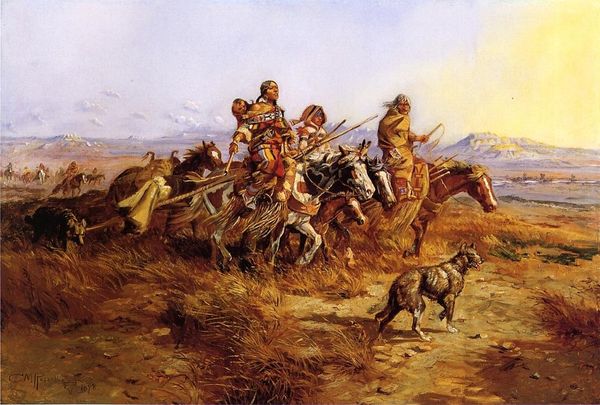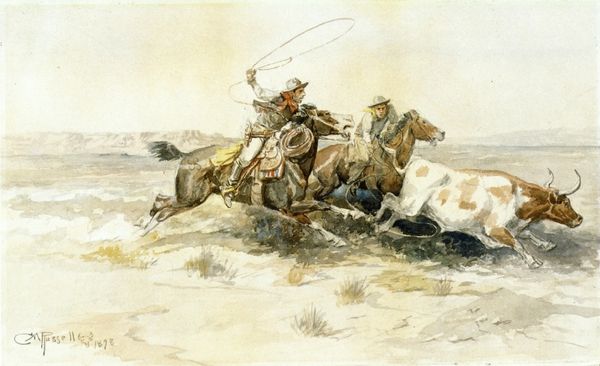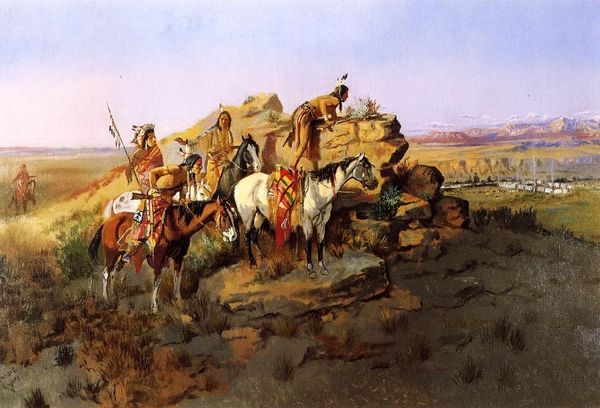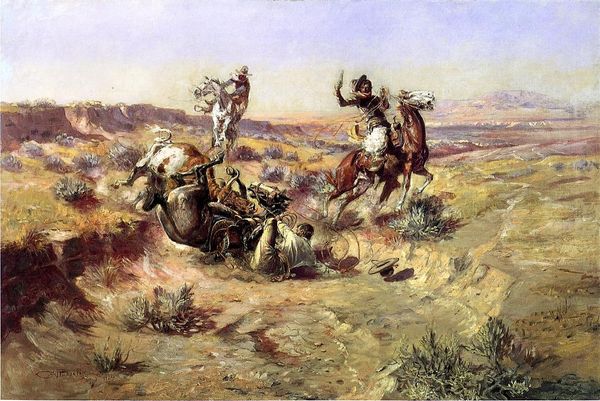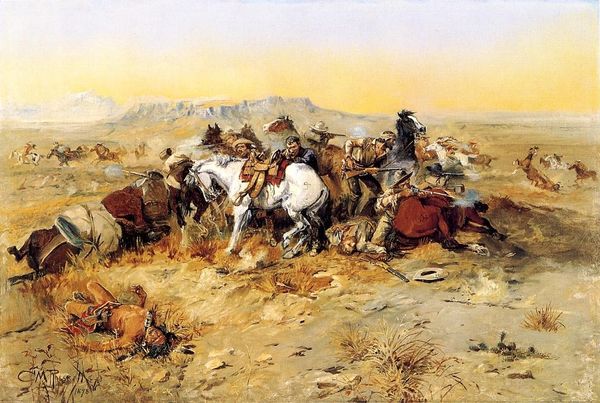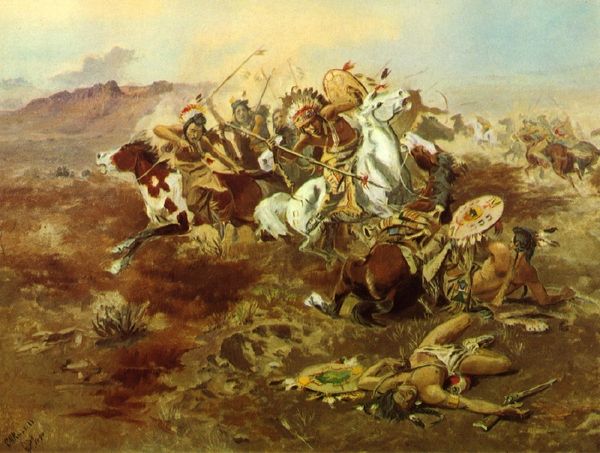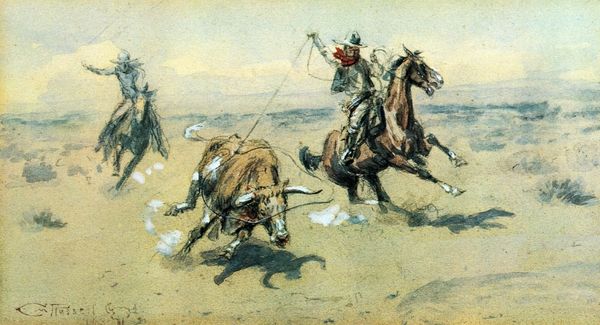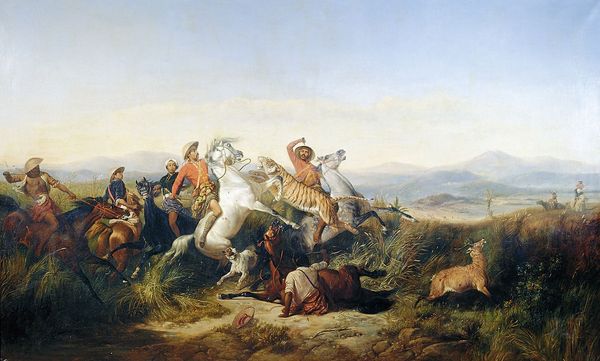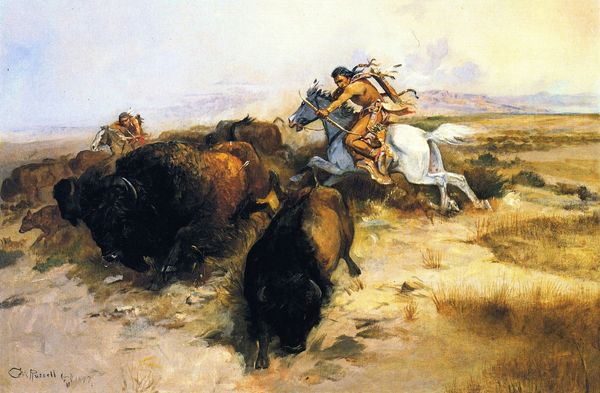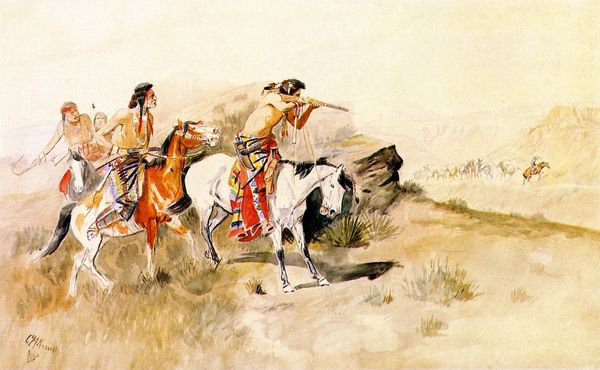
watercolor
#
war
#
landscape
#
oil painting
#
watercolor
#
romanticism
#
orientalism
#
horse
#
men
#
watercolour illustration
#
genre-painting
#
history-painting
Dimensions: 15 x 27 cm
Copyright: Public domain
Editor: This is "Arab Fantasia," a watercolor by Eugène Delacroix from 1832. There's such dynamism, horses and riders bursting forward, all in a blur of earthy tones. What symbols or deeper meanings do you see here? Curator: The image is an embodiment of cultural memory, particularly the West’s romanticized, often inaccurate, vision of the "Orient". Look closely at the weapons—spears and swords held aloft. They aren't simply tools of war; they're signifiers of power, tradition, and a kind of exotic otherness as viewed through a European lens. Delacroix is using potent, if somewhat stereotypical, symbols to evoke a specific emotional response. How does the artist play with our cultural expectations of the East? Editor: So, even though it seems action-packed and maybe even celebratory, there's a layer of Western interpretation coloring the scene? The way he depicts the riders almost feels theatrical. Curator: Precisely! The "fantasia," as a performance, itself becomes a symbol. Think about the cultural and political backdrop – France's colonial ambitions were growing. This image participates in that discourse, exoticizing North Africa. The movement—the horses and men appearing as one, evokes ideas of freedom. Is that freedom real, or imagined by someone looking in from the outside? Editor: I see. So, Delacroix is not just showing us a scene but also conveying an idea, a Western idea, about a culture. Curator: Indeed. Images like these solidified, and continue to inform, the ongoing dialogue, sometimes positive, often fraught, between East and West. What we must always ask ourselves when looking at images from other cultures, is, whose version of that story are we seeing? Editor: This painting, while beautiful on the surface, is layered with symbolic meanings tied to history and cultural perceptions. I'll definitely view Orientalist art differently from now on. Curator: As will I; I shall reexamine through the prism of collective consciousness and its echoes.
Comments
No comments
Be the first to comment and join the conversation on the ultimate creative platform.
